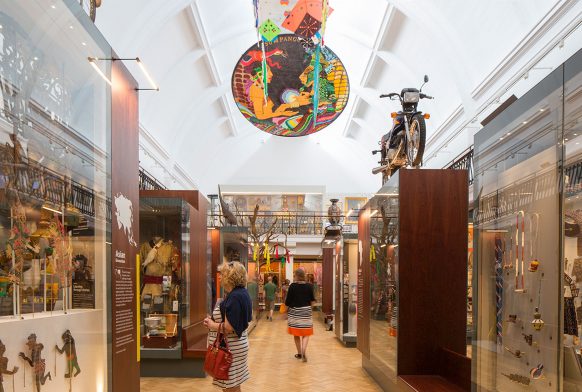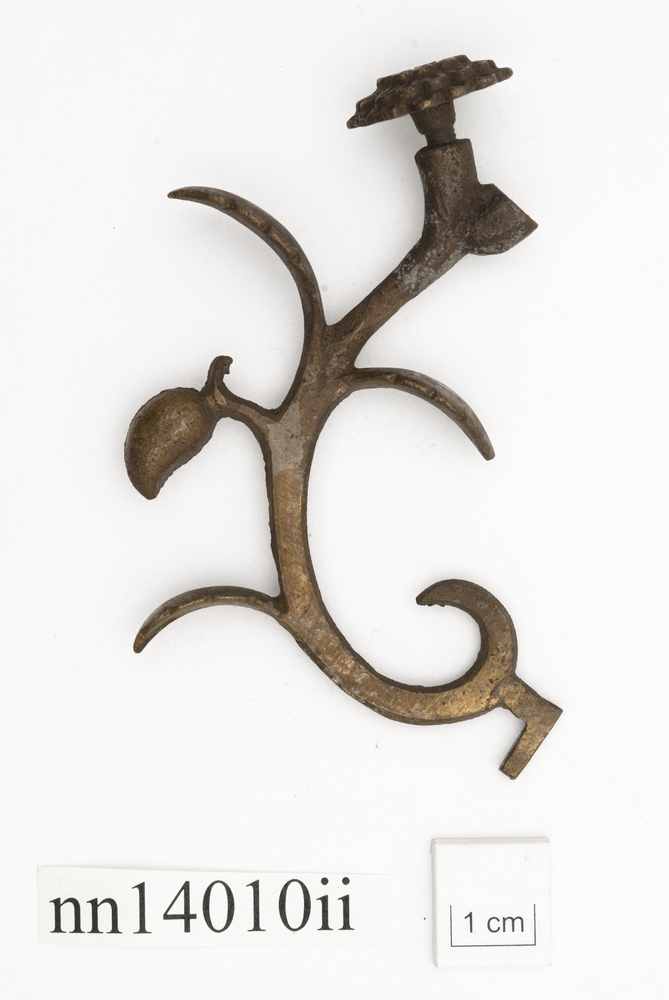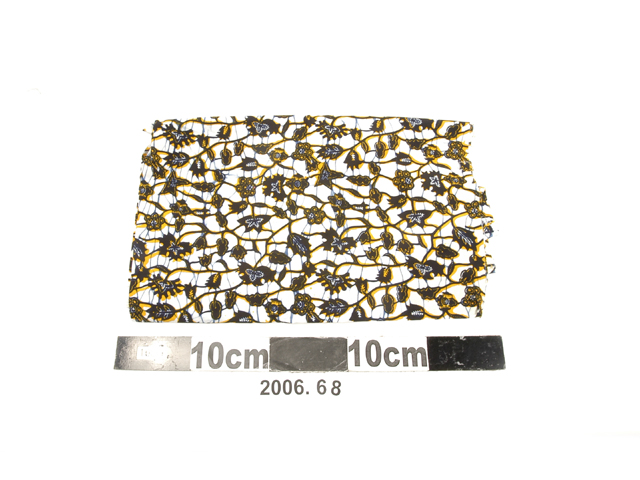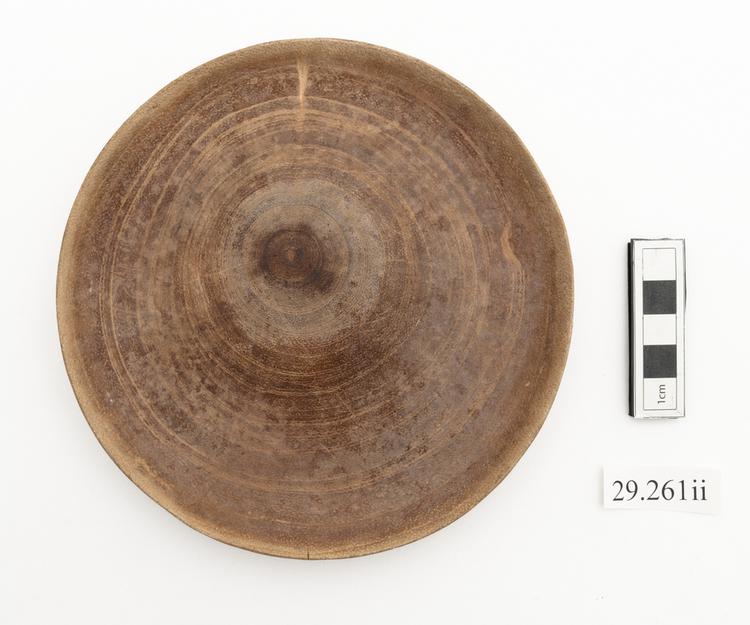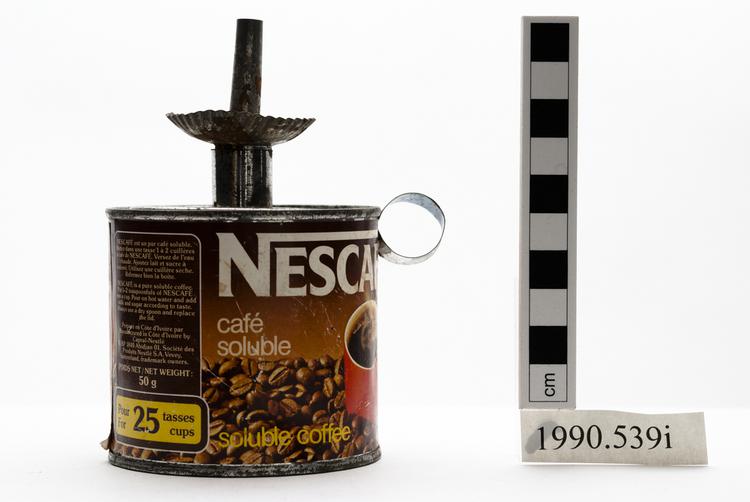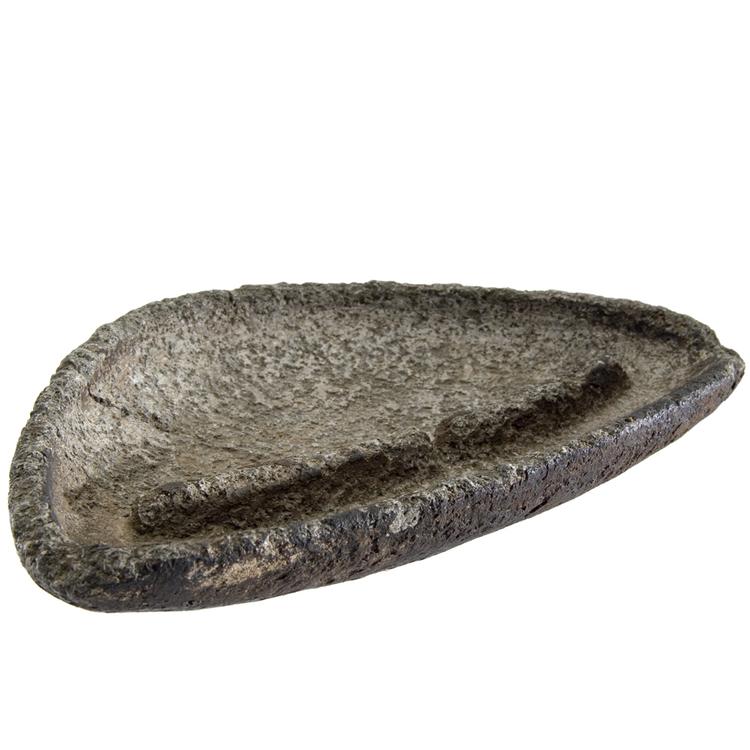
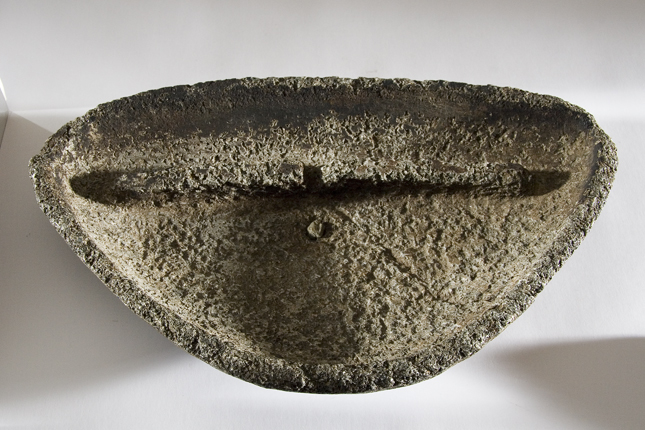
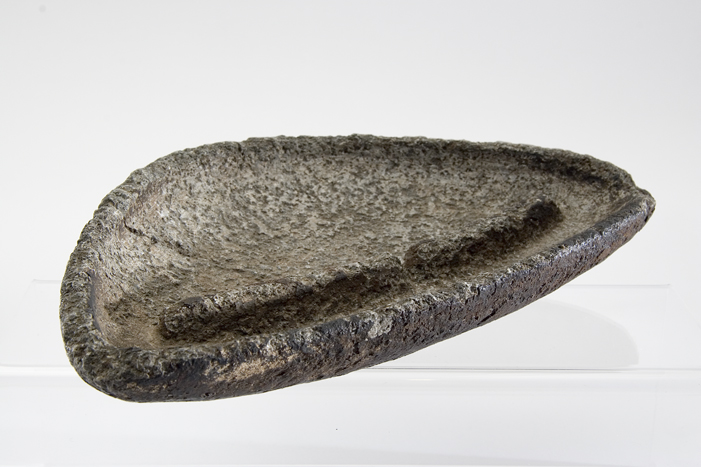
Stone lamp or 'kudlik'. This lamp is made from soapstone. Much of this soft stone was found in the Northwest Territories of Canada and traded over great distances. Blocks were quarried out and then shaped with an adze and a bow drill. Lamp wicks were made from dried moss arranged around the higher edge of the bowl and light and heat were provided in the igloo by burning animal oils, especially seal oil. The lamp was often kept filled by the drip from a piece of seal or polar bear fat hanging above the flame. Frames were suspended above the lamp for drying out mittens, boots etc.
Inuit is used as a name for indigenous peoples who live within the arctic circle and were previously called Eskimos. The term Eskimo was not chosen by the Inuit themselves most of whom now prefer to be known as Inuit, but there is still no total agreement on their name. Inuits live in Canada, Alaska and Greenland and so have different nationalities. Although they share a common culture few of them now live a completely traditional lifestyle. In the past they were living in very isolated places and so they had to be totally self sufficient, relying on land and sea animals, driftwood and soapstone to provide all their needs. When an animal was killed every part of it was used: the flesh was eaten, the fat or blubber used for burning in lamps, the bones used to make sewing needles, its sinew was used for thread and its skin used to make blankets, clothing and footwear. Walrus ivory was particularly important to make knives. At the coldest time of year Inuits wore two layers of clothing.The inside layer was worn with the fur against their skin and the outer layer with the fur on the outside, this also included their boots and mittens. Outer layers would be taken off when inside and heat was provided by Kudliks. Both men and women wore Parka (anorak) jackets made from animal skin but the woman's jacket called 'Amouti' was longer, with flaps at the front and back to help when kneeling or sitting to prepare food. The woman's jacket also differed from the man's because it had a larger hood to protect the baby, carried on her back, against the cold wind. Boots, called Kamik, were made from dressed skin which means that all the fur had been scraped off.



